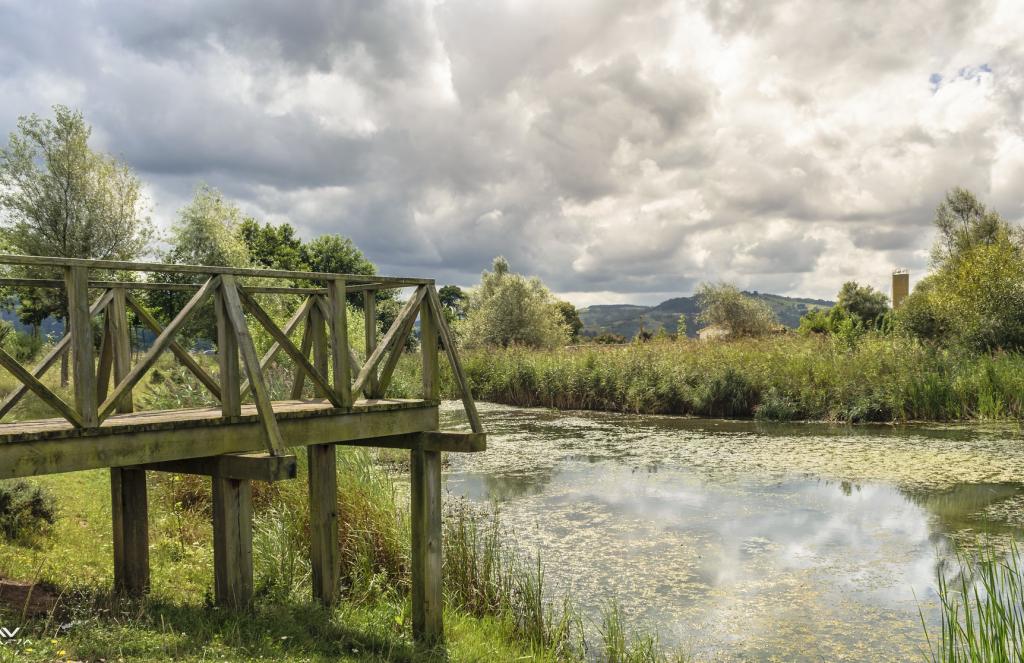Thessaloniki gets ready for its metro launch in November
The underground rapid transit lines have been under construction for almost two decades due to various project delays
 TheMayor.EU logo
TheMayor.EU logo 
Small brackish water stream near the Cantabrian town of Colindres, Source: Miguel Ángel Argos Vega, on Flickr (CC BY-NC-ND 2.0)
The Cantabrian tourism ministry is working on the creation of ‘water routes’
Cantabria is a mountainous region located in the north of Spain. Given its topography and location, it is understandable that its charm and attractions lie in the hiking offerings rather than the draw of the beaches that characterizes other regions from that country.
The regional Ministry of Tourism has decided to get creative and expand on this offer and brand with the creation of two hiking routes in Colindres whose theme will be water and water cycles, combining into one the benefit of ecotourism and awareness about the life-sustaining liquid.
The small town of Colindres lies on the coast of the Cantabrian Sea between the cities of Santander and Bilbao. The ocean waters are cold here and it is more famous as a fishing town, in fact, it is the second-largest fishing port in the region. Local authorities, however, want to bring the attention of visitors to the importance of water for the municipality.
36,500 euros will be spent on highlighting the sites and facilities that have been historically important for the local residents in the provision and usage of water. For this purpose, explanatory panels and wooden postings will be placed on the town square and along the trails.
One of the trails, aptly named ‘Ruta del Agua’ (The Water Route) will run through the higher altitudes of the municipality of Colindres and includes the Raposil stream, the Hedino washhouse, the Fuentana fountain, Molino Trutero, Pilón de San Roque, Molino de los Viejos, Hot Springs, Molino de los Nuevos, Linares lavadero, Fuente de la Peralada, the Tejera fountain and the Vencia fountain. Depending on the hiker’s preference, one can also go through the Santolaja reservoir and the Cantolices spring.
The other trail, called ‘Las Marismas de Colindres’, is shorter (3890 metres) and forms a loop starting and ending at the town square and going through the Madre stream, the Magdalena mill, the Alameduca fountain and the Cueva fountain.
These water use heritage sites represent places that have been long used by local residents in their daily lives, such as laundry sites, fountains and mills.

The underground rapid transit lines have been under construction for almost two decades due to various project delays

Now you can get your wine in Talence by paying directly in Bitcoin

That’s because the state has to spend money on updating the railway infrastructure rather than subsidizing the cost of the popular pass

Rethinking renewable energy sources for the urban landscape

The examples, compiled by Beyond Fossil Fuels, can inform and inspire communities and entrepreneurs that still feel trepidation at the prospect of energy transition

Now you can get your wine in Talence by paying directly in Bitcoin

The 10th European Conference on Sustainable Cities and Towns (ESCT) sets the stage for stronger cooperation between the EU, national and local level to fast track Europe's transition to climate neutrality.

At least, that’s the promise made by the mayor of Paris, Anne Hidalgo

The underground rapid transit lines have been under construction for almost two decades due to various project delays

At least, that’s the promise made by the mayor of Paris, Anne Hidalgo

Hostal de Pinós is located in the geographical centre of the autonomous region

Despite its church-y name, the district has long been known as the hangout spot for the artsy crowds

Urban dwellers across the EU are having a say in making their surroundings friendlier to people and the environment.

Forests in the EU can help green the European construction industry and bolster a continent-wide push for architectural improvements.

Apply by 10 November and do your part for the transformation of European public spaces

An interview with the Mayor of a Polish city that seeks to reinvent itself

An interview with the newly elected ICLEI President and Mayor of Malmö

A conversation with the Mayor of Lisbon about the spirit and dimensions of innovation present in the Portuguese capital














